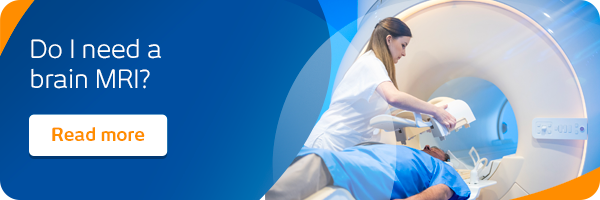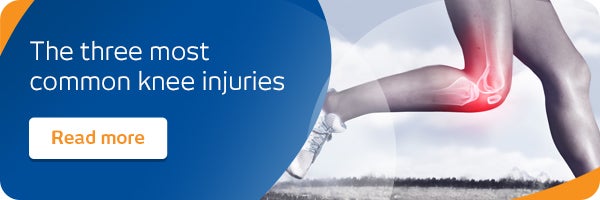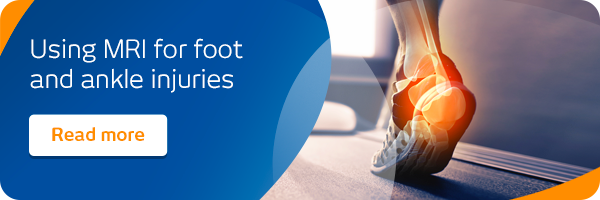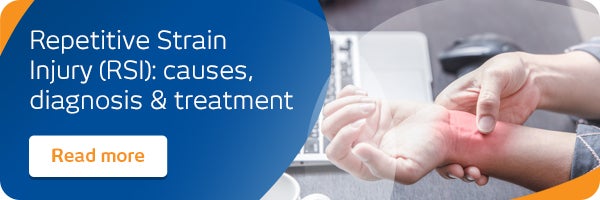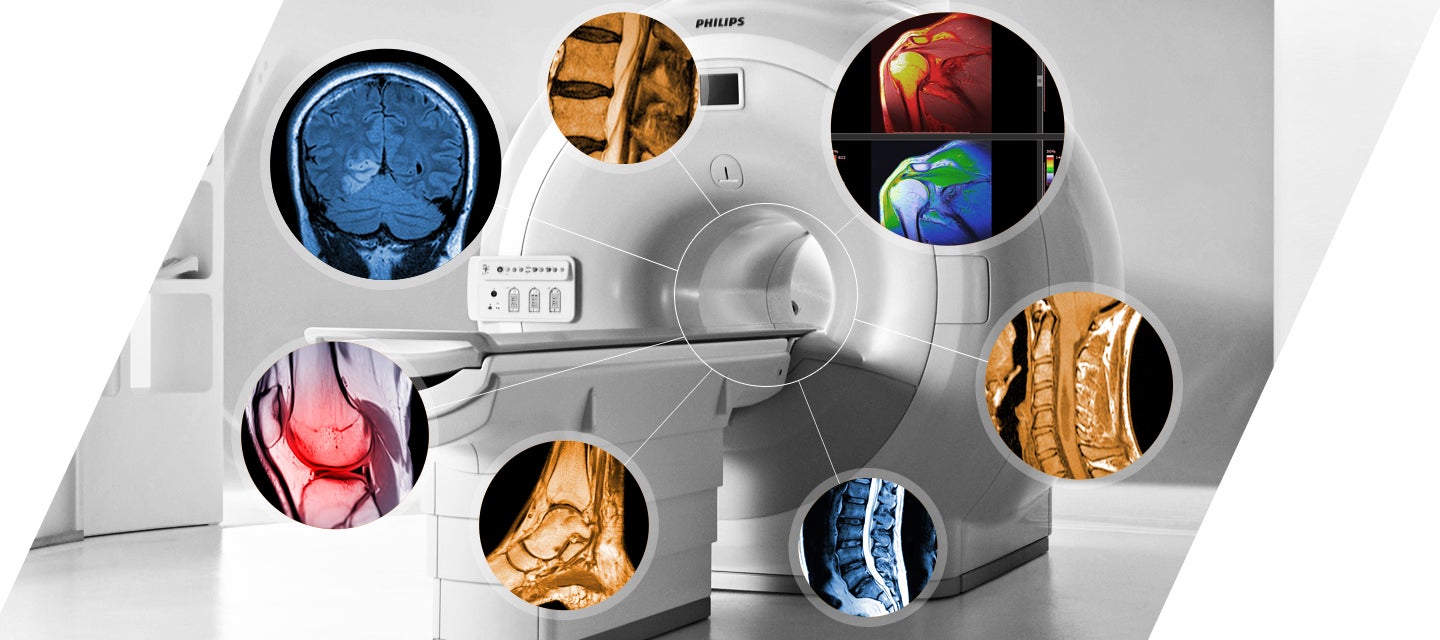
The role of MRI in the detection of injury and disease
The role of MRI in the detection of injury and disease

The advantages of MRI
Magnetic resonance imaging (MRI) uses strong magnets and radio-frequency pulses to generate images (or pictures) of inside the body. Doctors may refer an MRI to assist with the diagnosis and treatment of many injuries and illnesses.
It may be preferred over other types of imaging because it:
- can be very useful in detecting/diagnosing conditions such as damaged ligaments, joint and spinal injuries, and tumours of internal organs/gland (such as the brain, liver, prostate and breast)
- produces high-resolution pictures of soft tissue such as organs and muscles that don’t show up on x-rays
- carries no radiation exposure risk, like in X-rays, PET and CTs.
Why choose MRI at I-MED Radiology
As Australia’s largest imaging provider, millions of Australians depend on us every year for high-quality care and expert diagnoses. Our caring and compassionate team share a single purpose - to save lives and reduce uncertainty.
We pride ourselves on being at the forefront of technology, investing in the latest equipment, and implementing smart technologies that enable an improved patient experience - from booking to accessing results.
The size and experience of our network of subspecialty radiologists ensures a consistent, high standard of service – from anywhere across metropolitan, regional and remote Australia.
Brain
A brain MRI can help your doctor to diagnose a variety of medical conditions, evaluate or rule out aneurysms of cerebral vessels, multiple sclerosis, tumours, conditions within the orbits (eye cavity) or inner ear, stroke, brain injury/ trauma as well as spinal cord disorders.
Need a brain MRI? Find out more here.
Shoulder
An MRI of the shoulder is the only test that can simultaneously give high resolution images of the bone marrow, cartilage and muscle and tendons associated with the shoulder joint.
Need a shoulder MRI? Find out more here.
Hand and wrist
A hand and/or wrist MRI can help characterise and diagnose a variety of medical conditions. It may be used to confirm or rule out one of the following conditions: sub-chondral cysts and erosions, synovitis, bursitis, osteomyelitis, osteitis, osteoarthritis and psoriatic, septic or rheumatoid arthritis.
Need a hand/wrist MRI? Find out more here.
Cervical spine (neck)
A cervical spine MRI can help your doctor to characterise and diagnose a variety of medical conditions. It can be used to evaluate pain, numbness, tingling in arms, neck and shoulders, and identify the presence of tumours, bleeding, swelling or inflammation in around the spinal cord.
Need a cervical spine MRI? Find out more here.
Lumbar spine (lower back)
Doctors may also refer patients for a lumbar spine MRI in the case of lower spine or lower back injury, back pain accompanied by a fever, if there is suspicion of cancer, bladder problems such as inability to urinate or if weakness or numbness in the legs.
Need a lumbar spine MRI? Find out more here.
Knee
A knee MRI can evaluate or rule out knee pain, weakness and swelling, damaged cartilage, sports related injuries, bone fractures not visible on other imaging tests, extent of arthritis, infection or fluid build-up, tumours of the bone and joints and persistent pain after surgery. Doctors may also request a knee MRI if surgery is contemplated to help plan or to determine the suitability of a surgical procedure.
Need a MRI Knee? Find out more here.
Foot and ankle
When it comes to diagnosing foot and ankle injuries, MRI is often recommended due to its ability to visualise soft tissue, bone marrow and fractures that are not evident on x-ray or other imaging modalities.
Need a foot or ankle MRI? Find out more here.
Breast
Screening for breast cancer is vitally important to detect tumours at the earliest stages, often before they can be felt.
A breast MRI is different to a standard screening mammogram; it is used to look for new or recurrent tumours after previous breast cancer treatment or to gauge the body’s response to treatment such as chemotherapy, prior to surgery to the breast or lymph glands.
Need a breast MRI? Find out more here.
Liver
An MRI of the liver can identify the structure and condition of the organ, as well as any abnormal growths. It can detect many conditions of the liver and other conditions including hepatitis, hemochromatosis and fatty liver disease.
Need a liver MRI? Find out more here.
Small bowel
MRI enterography is used to evaluate the existence and extent of bowel disease, including the response to therapy of bowel disease, particularly Crohn’s disease. It allows doctors to identify and locate the presence of complications arising from various forms of inflammatory bowel disease.
Need an enterography MRI? Find out more here.
Prostate
A prostate MRI is used to show the presence of high-grade prostate cancer, to more clearly show the extent of known prostate cancer (specifically to see if it is contained within the prostate gland or if it has spread outside the gland) and can help in planning surgery and radiotherapy treatment for prostate cancer.
Need a prostate MRI? Find out more here.
RSI (upper limbs and neck)
Repetitive strain injury (RSI) is a term sometimes used for pain caused from the repeated movement of a body part (most often the upper limbs - fingers, wrists, elbows and shoulder). Imaging may be required if there are atypical symptoms, if the pain doesn’t subside with rehabilitation/physiotherapy, or if there is no response to treatment.
Watch video
Do you speak a language other than English? You can watch this video using translated subtitles - follow these instructions to select your language.

